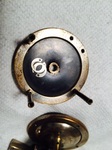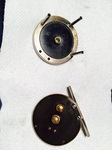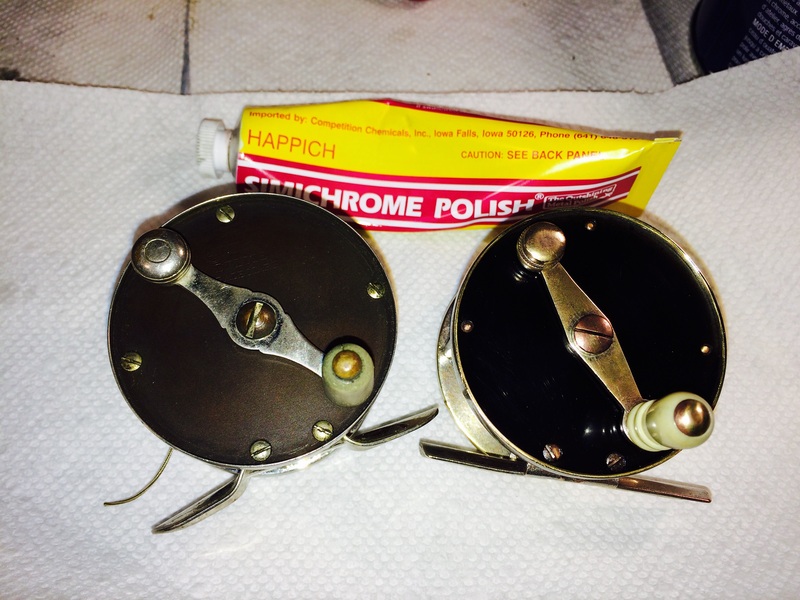I did a test with a Pflueger sideplate that showed no effect of the vinegar, but Brian Funai pointed out that the material was likely bakelite. Here I performed a similar test using an early Edward Vom Hofe side plate. the plate was suspended in vinegar for appr. 8 hours, then rinsed and dried. As you can see, there is certainly a line where the plate was exposed to vinegar and the hard rubber has lightened relative to the non-exposed area:
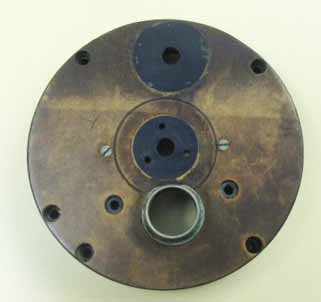
However, note that when looking at the inner surface that has not been (damaged by UV) over the years, the vinegar has not changed the color of the rubber. It has, however, removed the corrosion from the NS rim:
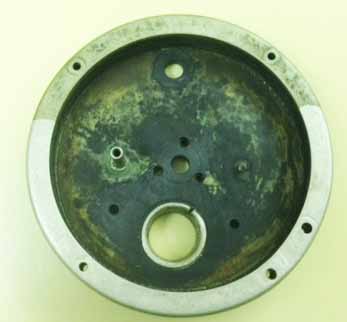
it occurred that the difference might be due to soaking in water rather than an effect of the vinegar, so I then soaked the whole plate just in water for a couple hours, then dried and wiped the plate off. In the process, I wiped out lubrication from the inner plate surface and when I wiped the outer surface with the same rag, I likely put oil back on the rubber. The result was that the difference between the portion that got the vinegar soak and the part that did not is now inapparent:
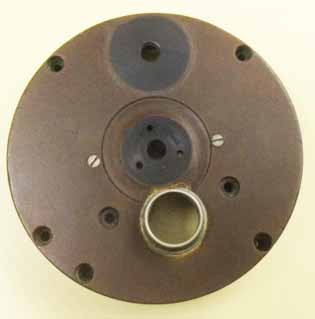
and no line on the inner, (non-sun-exposed) hard rubber surface.

As you can see, this plate is heavily faded from UV exposure (edited, based on conversation below with Marius) with age and as described in the other thread, needs treatment with wet/dry sandpaper or emery cloth and Simichrome to remove that (damage) and bring the plate back to original black finish. However, at least this test did not reveal damage due to vinegar treatment. Perhaps others can add their experiences to this thread if they have other information.



